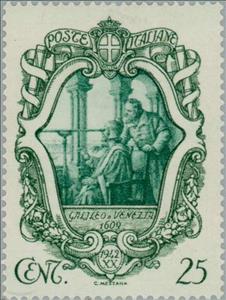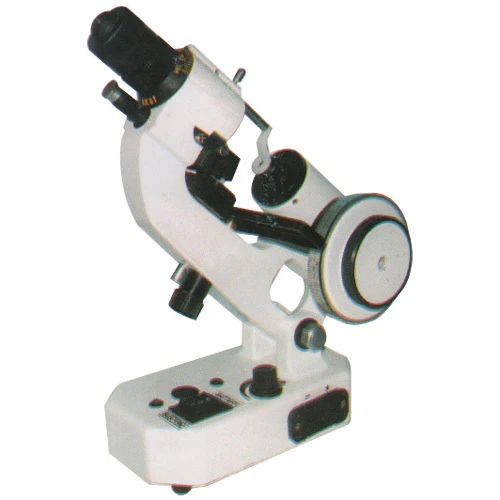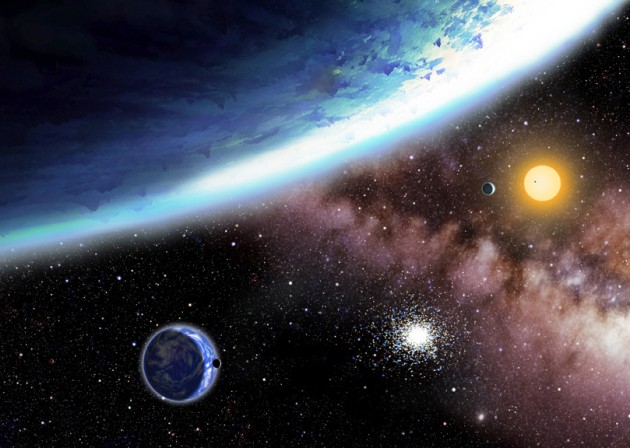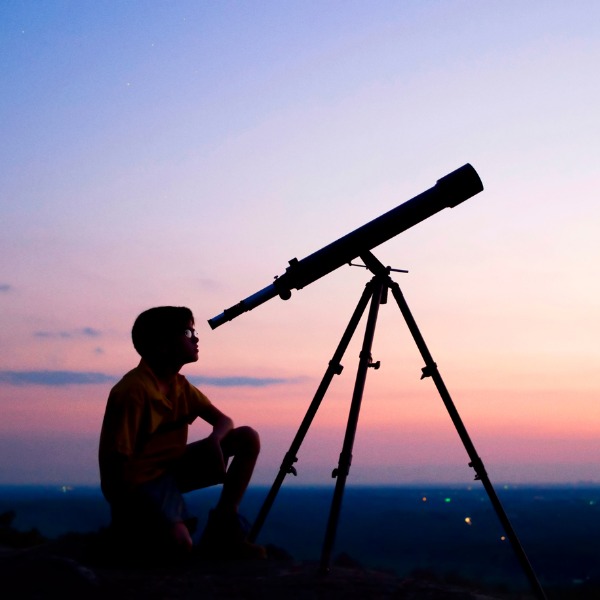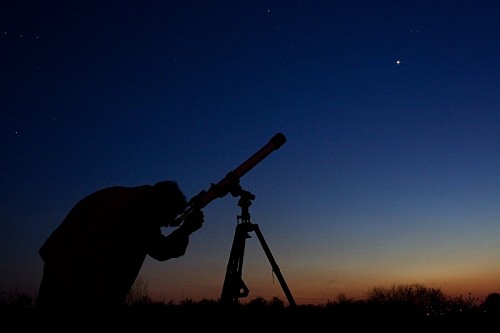Stamp: Galileo's telescope test in Venice (Italy 1942)
Galileo's telescope test in Venice (Italy 1942)
28 September (Italy ) within release 3 centenary of the death of Galileo Galilei goes into circulation Stamp Galileo's telescope test in Venice face value 25 Italian centesimo
| Stamp Galileo's telescope test in Venice in catalogues | |
|---|---|
| Michel: | Mi:IT 635 |
| Stamp Number: | Sn:IT 420 |
| Yvert et Tellier: | Yt:IT 444 |
| Stanley Gibbons: | Sg:IT 576 |
| Unificato: | Un:IT 463 |
Stamp is vertical format.
Galileo Galilei, scientist (1564-1642)Also in the issue 3 centenary of the death of Galileo Galilei:
- Stamp - Galileo professor at the University of Padua face value 10;
- Stamp - Galileo's telescope test in Venice face value 25;
- Stamp - Portrait of Galileo Galilei face value 50;
- Stamp - Galileo Confined in Arcetri face value 1.25;
Stamp Galileo's telescope test in Venice it reflects the thematic directions:
Famous People refers to the fame and public attention accorded by the mass media to individuals or groups or, occasionally, animals, but is usually applied to the persons or groups of people (celebrity couples, families, etc.) themselves who receive such a status of fame and attention. Celebrity status is often associated with wealth (commonly referred to as fame and fortune), while fame often provides opportunities to make money.
Commemorations are a type of religious observance in the many Churches of the Anglican Communion, including the Church of England. They are the least significant type of observance, the others being Principal Feasts, Principal Holy Days, Festivals, and Lesser Festivals. Whereas Principal Feasts must be celebrated, it is not obligatory to observe Commemorations. They are always attached to a calendar date, and are not observed if they fall on a Sunday, in Holy Week, or in Easter Week. In Common Worship Commemorations are not provided with collects or indications of liturgical colour. However, they may be celebrated as Lesser Festivals if local pastoral conditions suggest it.
An optical instrument is a device that processes light waves (or photons), either to enhance an image for viewing or to analyze and determine their characteristic properties. Common examples include periscopes, microscopes, telescopes, and cameras.
Astronomy is a natural science that studies celestial objects and the phenomena that occur in the cosmos. It uses mathematics, physics, and chemistry in order to explain their origin and their overall evolution. Objects of interest include planets, moons, stars, nebulae, galaxies, meteoroids, asteroids, and comets. Relevant phenomena include supernova explosions, gamma ray bursts, quasars, blazars, pulsars, and cosmic microwave background radiation. More generally, astronomy studies everything that originates beyond Earth's atmosphere. Cosmology is a branch of astronomy that studies the universe as a whole. .
A telescope is a device used to observe distant objects by their emission, absorption, or reflection of electromagnetic radiation.Originally, it was an optical instrument using lenses, curved mirrors, or a combination of both to observe distant objects – an optical telescope. Nowadays, the word "telescope" is defined as a wide range of instruments capable of detecting different regions of the electromagnetic spectrum, and in some cases other types of detectors.
An astronomer is a scientist in the field of astronomy who focuses their studies on a specific question or field outside the scope of Earth. They observe astronomical objects such as stars, planets, moons, comets and galaxies – in either observational (by analyzing the data) or theoretical astronomy. Examples of topics or fields astronomers study include planetary science, solar astronomy, the origin or evolution of stars, or the formation of galaxies. A related but distinct subject is physical cosmology, which studies the Universe as a whole
